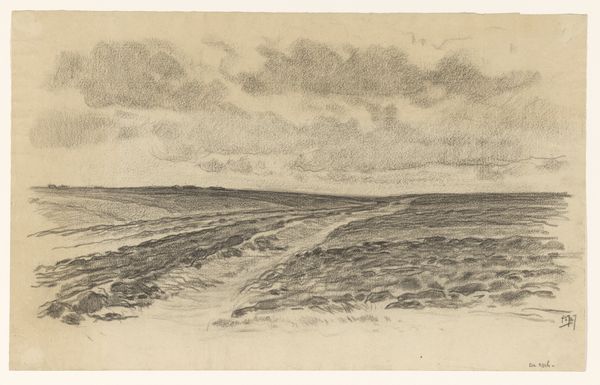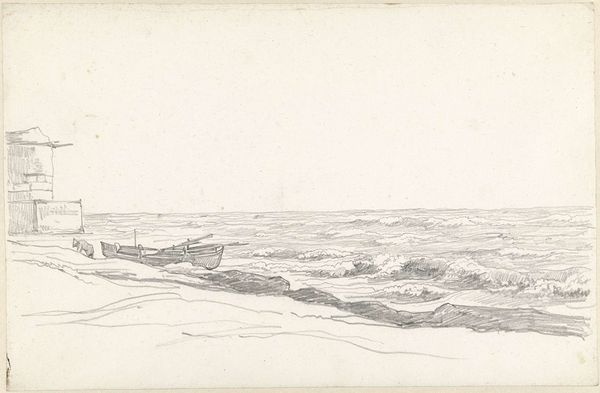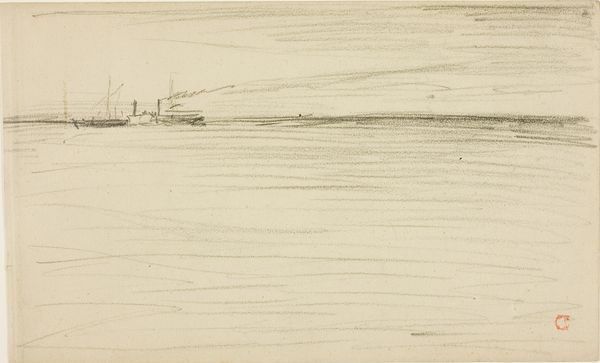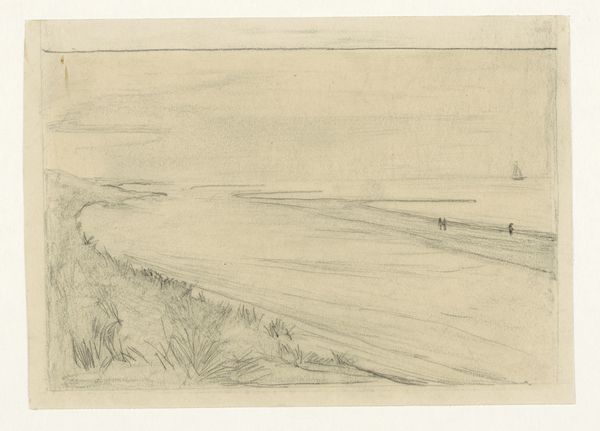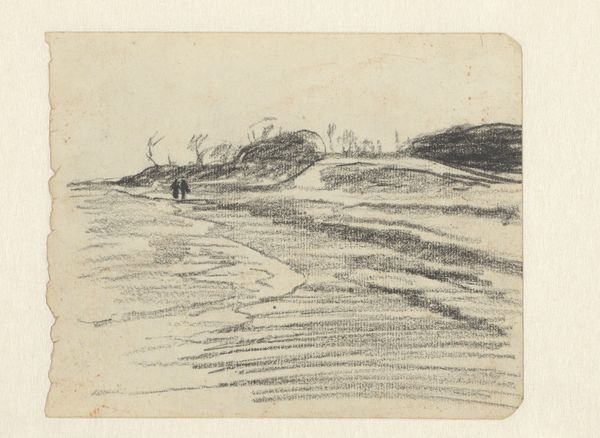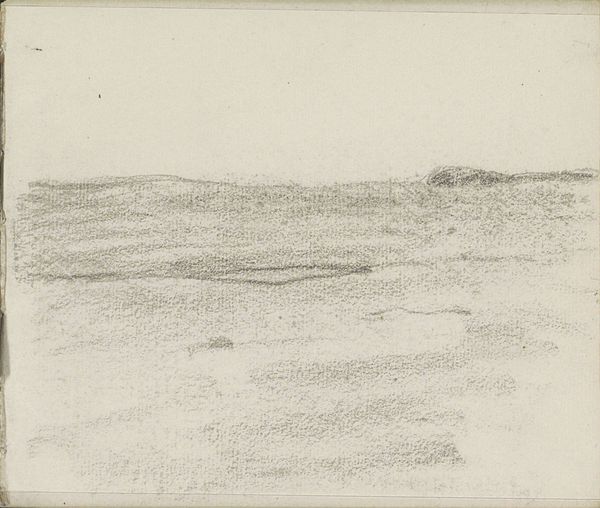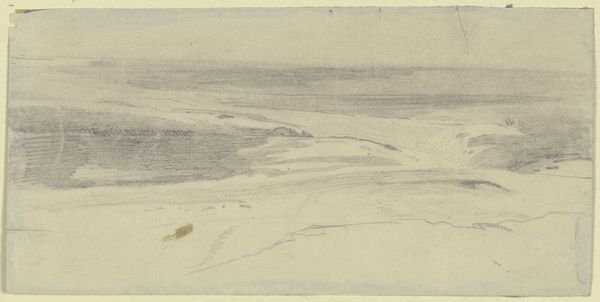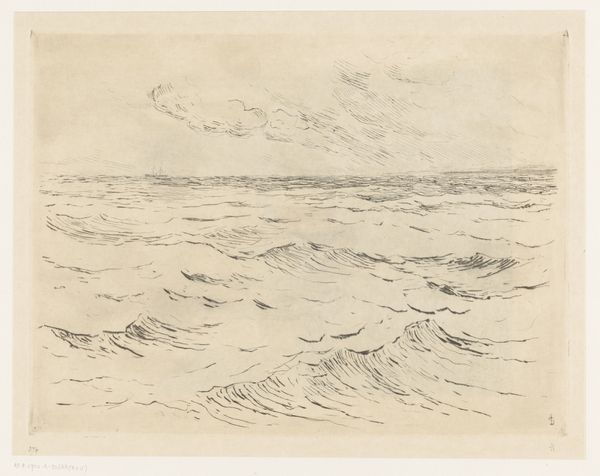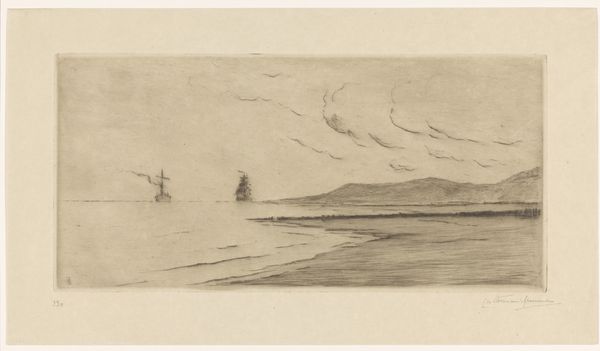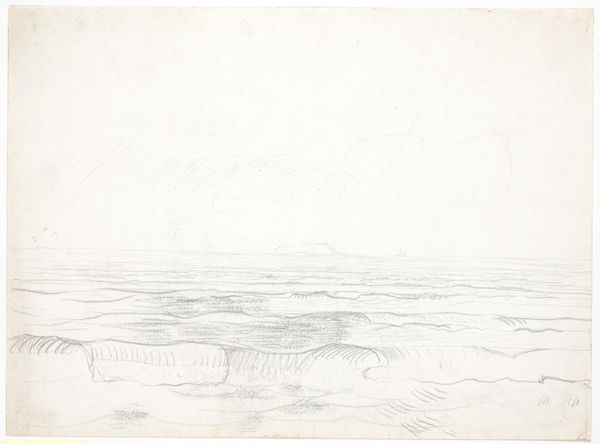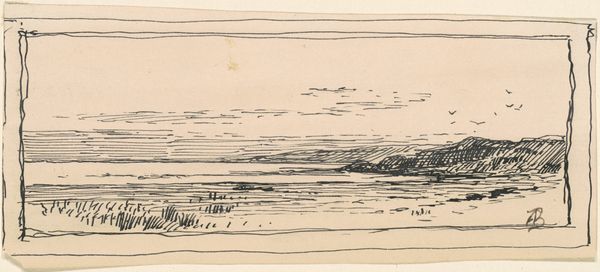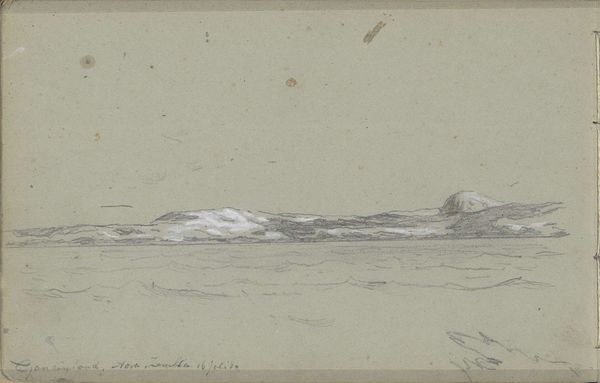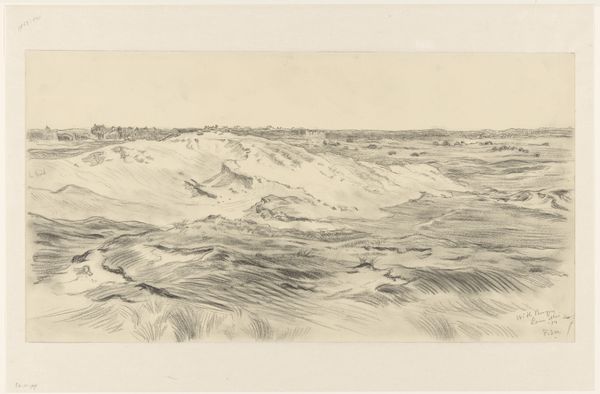
Copyright: Public Domain: Artvee
Curator: The artwork before us, "Moonlight on Waves," is a drawing created by John Singer Sargent around 1876. It's rendered in pencil and, according to some assessments, perhaps with touches of watercolor, capturing a nocturnal seascape. Editor: Immediately, I'm struck by the moodiness conveyed despite the simple medium. The restrained use of pencil strokes generates a real sense of depth, the heavy water and serene moonlight above almost confront each other as masses in a tense but elegant visual dialogue. Curator: Indeed, Sargent's technique here speaks volumes. Notice the varying densities of shading; how they create texture and mimic the play of light on water. The strokes aren't merely descriptive; they actively construct the experience of observing this moonlit scene. Editor: And how interesting that even in this, presumably informal, medium he is also evoking themes found throughout nineteenth-century artistic expressions regarding mankind’s relationship with nature, an almost sublime engagement reflected via very visible cultural structures! We cannot overlook that Sargent painted during a time of rapid urbanization; I wouldn't be surprised if that socio-economic structure played a pivotal role regarding the composition's intended social reading, considering the public opinion. Curator: It’s an interesting point regarding how broader sociopolitical forces contributed to the artist's selection of subject matter; however, it can also be discussed by examining the formal artistic language found throughout the whole. This careful contrast between light and shadow, what it suggests in its composition and the interplay with its material substance, contributes to the reading and even dictates how you feel while contemplating this romanticist depiction. The placement of the horizon, too, creates an interplay. Editor: Absolutely! And what resonates strongly for me is how Sargent employs this intimate format—a drawing, almost like a private reflection—to comment on the larger narrative regarding society, which is especially clear in his larger oils... which, from that angle, brings out yet another possible sociopolitical interpretation, where this smaller artwork acts as another kind of language found in the formal expression of art, something like semiotics through historical records of our cultural behavior. Curator: The artist clearly manipulates form, playing between observation, material expression, and symbolism... a truly fascinating intersection of approaches! Editor: Indeed; perhaps Sargent’s piece serves as a potent demonstration of artistic prowess across diverse mediums that continues influencing cultural appreciation in its own right even up to this very moment.
Comments
No comments
Be the first to comment and join the conversation on the ultimate creative platform.
